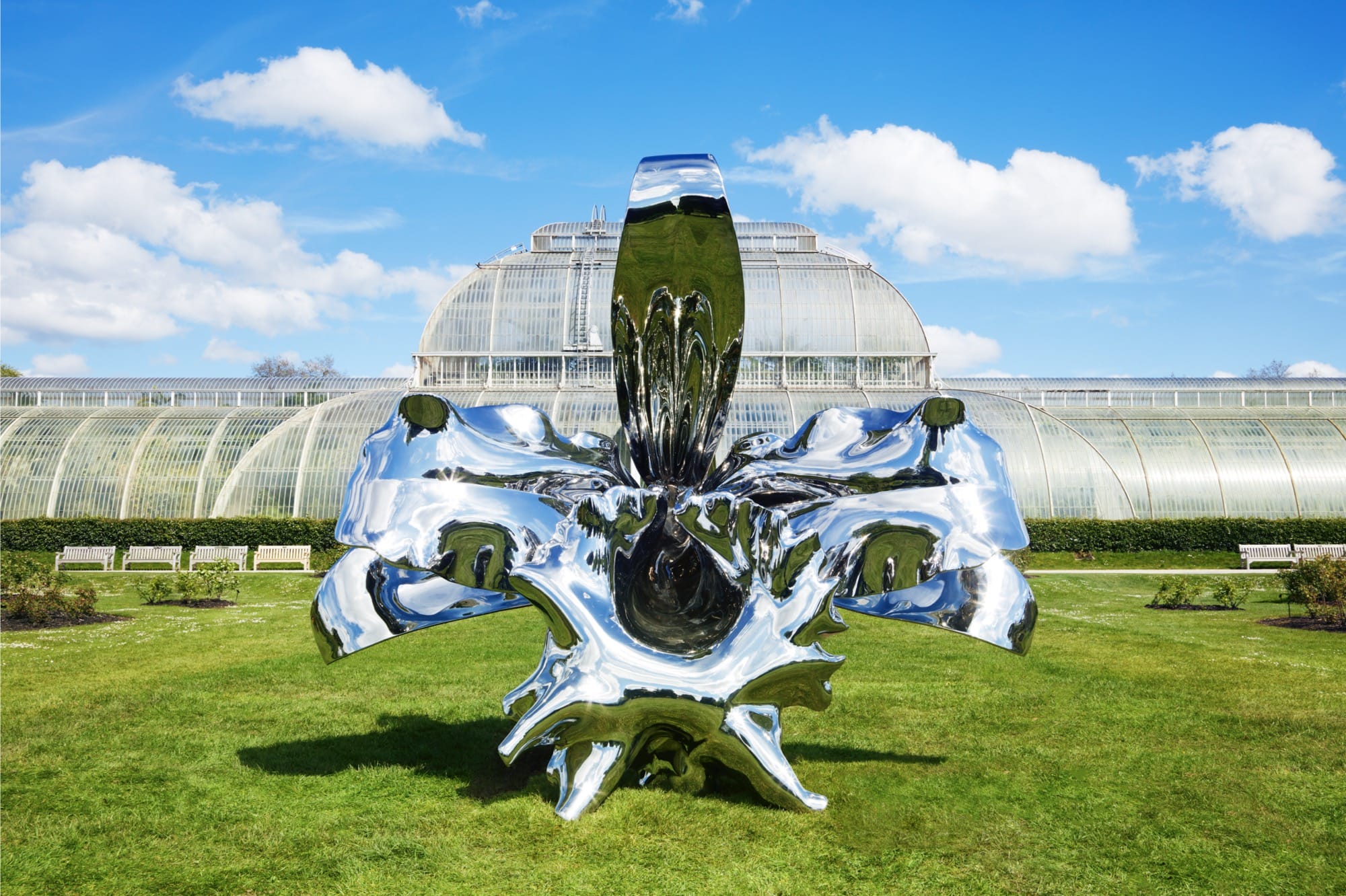This post was originally published on Colossal
“Light into Life (The Evolution of Forms)” (2024). All images © Marc Quinn and RBG Kew, shared with permission
From bronze, chrome, and silicone, Marc Quinn’s larger-than-life botanicals emerge with delicate precision. The exhibition Light into Life at Royal Botanic Gardens Kew in London continues the artist’s exploration of the boundaries between the natural and artificial, the living and non-living, sexuality, and the passage of time.
Quinn often uses a mirrored effect to literally reflect humanity in nature while blurring the lines between the work and its surroundings. In others, he emphasizes the heft, history, and scale possible with bronze. For example, “Held by Desire (The Dimensions of Freedom)” and “Burning Desire” tap into the metaphorical association of flowers to human biology and anatomy, their titles emphasizing emotional parallels, like the precise tension of a carefully-tended bonsai or the supple petals of a red, sensual orchid with yearning.
Orchids, bonsai, and tropical flowers provide the starting point for Quinn’s remarkable sculptures that emphasize permanence and in a realm that relies on the opposite: changing seasons, weather patterns, and visiting pollinators. He confronts the ephemerality of blossoms and leaves by casting their likenesses at a monumental scale in metal, freezing blooms to preserve the zenith of their beauty, or immersing entire bouquets in silicone oil to indefinitely sustain their vibrancy.
Light into Life continues through September 29. Explore more of the artist’s work on his website.

“Held by Desire (The Dimensions of Freedom)” (2017-2018). Photo by Ines Stuart-Davidson

“Light into Life (Photosynthetic Form)” (2023)

“Burning Desire” (2011)

“Eternal Spring (Cultural Evolution)”

“Light into Life (The Release of Oxygen)” (2023)

“Human Nature” (2024)

“Event Horizon (Sabal)” (2024). Photo by Ines Stuart- Davidson

“Our Botanic Selves, Himalayan Mayapple”
Do stories and artists like this matter to you? Become a Colossal Member today and support independent arts publishing for as little as $5 per month. The article Marc Quinn’s Monumental Flowers Invite Us to Reflect Upon Our Evolving Relationship with Nature appeared first on Colossal.





0 Comments